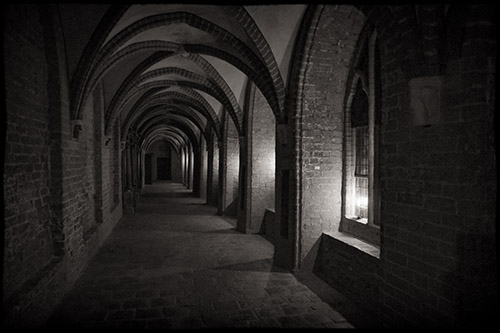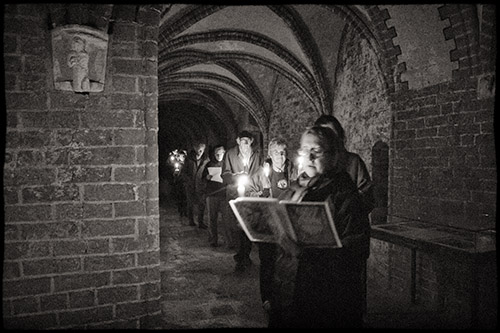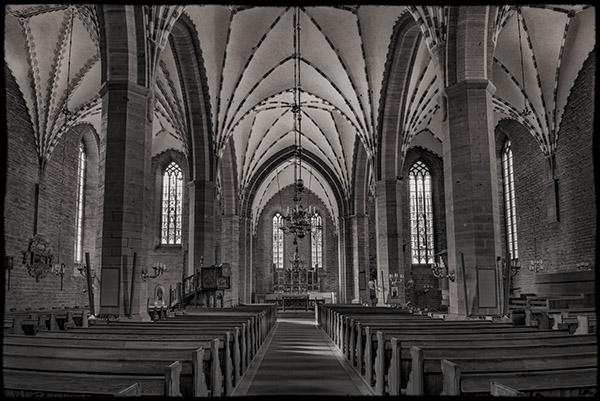Multisensory Digital Reconstruction
We strive to produce total-immersion virtual-reality reconstruction of processions through the nuns’ cloister as well as of the offices and Mass liturgy sung by the nuns in their gallery in a late-medieval Birgittine monastery. We are interested in the perceptual positions of nuns assuming various places within their internal hierarchy, of clergy members in the choir to the west, and of lay pilgrims and donors in the nave to the east. We are particularly curious about the ways in which sense perception, especially aurality, changes with respect to movement.


Ensemble Gemma and members of the working group processing in the candle-lit cloister at Kloster Ebstorf.
Listen to a complete circuit through the cloister.
Site and Sources
A late medieval Birgittine church is an ideal site at which to study the multisensory production of the past and to re-present it. Not only were these structures conceived specifically to be filled by chants of the Birgittine liturgy, they provided various stages for rituals that were intended not only for the communities of nuns and clerics, but also for visitors, including pilgrims and (potential) donors. In fact, the building and rituals determined the “corporate image” of the Birgittine communities, which was carefully controlled in the highly competitive setting of the spiritual economy. The Birgittine normative writings as well as occasional writings preserved through archival sources consisting of such genre as house books, necrologies, letters, and diaries by Birgittine nuns and fathers permit important insights into the production and reception of the specific sensescape.
Historical Background
In the 14th century Saint Birgitta of Sweden instituted her reform order known officially as the Order of the Holy Savior and unofficially as the Birgittines. She sought to curb abuses and correct the shortcomings of all previous orders. Through the extensive normative texts, Saint Birgitta and her immediate followers established a rule and several sets of detailed prescriptions and proscriptions for this, the only order administered by and for women. Everything about the Birgittine order was distinctive. The soaring architecture of the Birgittine church accommodated the nuns’ gallery high above the floor of the nave. As the nuns sang the offices and the Mass chants that were prescribed in the cantus sororum, the only liturgy ever composed for medieval women, the nuns filled all the vast acoustic spaces of the church interior, including those of the choir, that privileged realm reserved for the clergy.

Former Birgittine monastery church, Vadstena.
Listen to the sequence Tota pulchra es from the Birgittine repertory, performed by the Ensemble Gemma at a concert in Altomünster